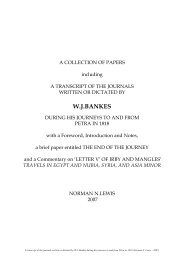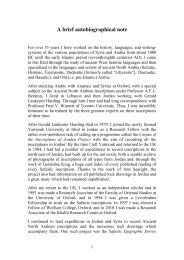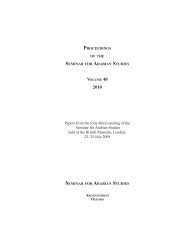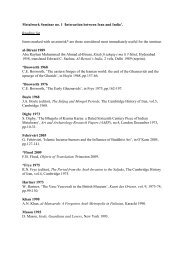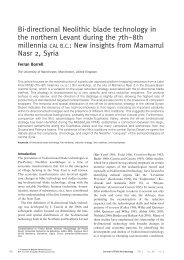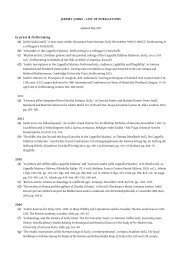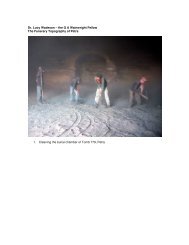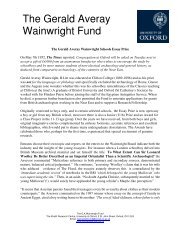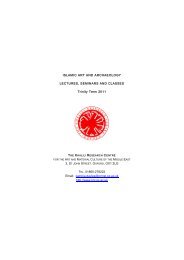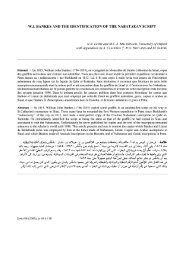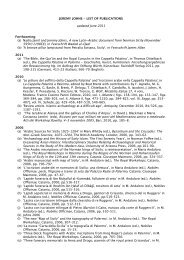THE DHOFAR EPIGRAPHIC PROJECT A Description of the ...
THE DHOFAR EPIGRAPHIC PROJECT A Description of the ...
THE DHOFAR EPIGRAPHIC PROJECT A Description of the ...
You also want an ePaper? Increase the reach of your titles
YUMPU automatically turns print PDFs into web optimized ePapers that Google loves.
§ 6.<br />
6.1.<br />
Script 1.<br />
The Transliteration <strong>of</strong> <strong>the</strong> Inscriptions.<br />
Many <strong>of</strong> <strong>the</strong> forms <strong>of</strong> <strong>the</strong> letters <strong>of</strong> <strong>the</strong> inscriptions<br />
are similar to graphemes found in inscriptions written in o<strong>the</strong>r<br />
South Semitic scripts and it is tempting to assume <strong>the</strong> letters<br />
have <strong>the</strong> same values here. By assigning values to <strong>the</strong> letters on<br />
<strong>the</strong> basis <strong>of</strong> comparisons <strong>of</strong> letters in o<strong>the</strong>r scripts, it is<br />
possible, with some <strong>of</strong> <strong>the</strong> shorter lines, to identify roots that<br />
occur in Arabic. An obvious interpretation <strong>of</strong> <strong>the</strong>m would be that<br />
<strong>the</strong>y are personal names.<br />
Short texts and such interpretations do not, however,<br />
prove <strong>the</strong> value <strong>of</strong> <strong>the</strong> letters and difficulties are encountered<br />
when trying to establish <strong>the</strong> values <strong>of</strong> more ambiguous forms.<br />
Fur<strong>the</strong>rmore, <strong>the</strong> longer inscriptions, where <strong>the</strong>re is some<br />
context, have not, at this stage <strong>of</strong> analysis, provided<br />
conclusive evidence for <strong>the</strong> values <strong>of</strong> ei<strong>the</strong>r familiar forms or<br />
<strong>the</strong> less common ones.<br />
For <strong>the</strong>se reasons r no attempt has been made in <strong>the</strong><br />
edi tion to attribute etymological or phonemic values to <strong>the</strong><br />
letters and <strong>the</strong> inscriptions in both Scripts 1 and 2 have simply<br />
been transliterated into two separate fonts which represent, in<br />
standardized forms, <strong>the</strong> original shapes <strong>of</strong> <strong>the</strong> letters.<br />
Table 1 is a chart <strong>of</strong> <strong>the</strong> typed forms in Script 1. The<br />
forms are arranged according to shape, reading from left to<br />
right and down <strong>the</strong> page. Underneath each form are <strong>the</strong> number <strong>of</strong><br />
attested examples. Figures 1 - 6 is a script table <strong>of</strong> Script 1<br />
wi th examples <strong>of</strong> <strong>the</strong> letters represented by each typed forms.<br />
The last two columns <strong>of</strong> Figure 6 give some anomalous forms which<br />
have not been transliterated into <strong>the</strong> typed script.<br />
Most <strong>of</strong> <strong>the</strong> texts in Script 1 are wri tten vertically<br />
8<br />
§ 6




